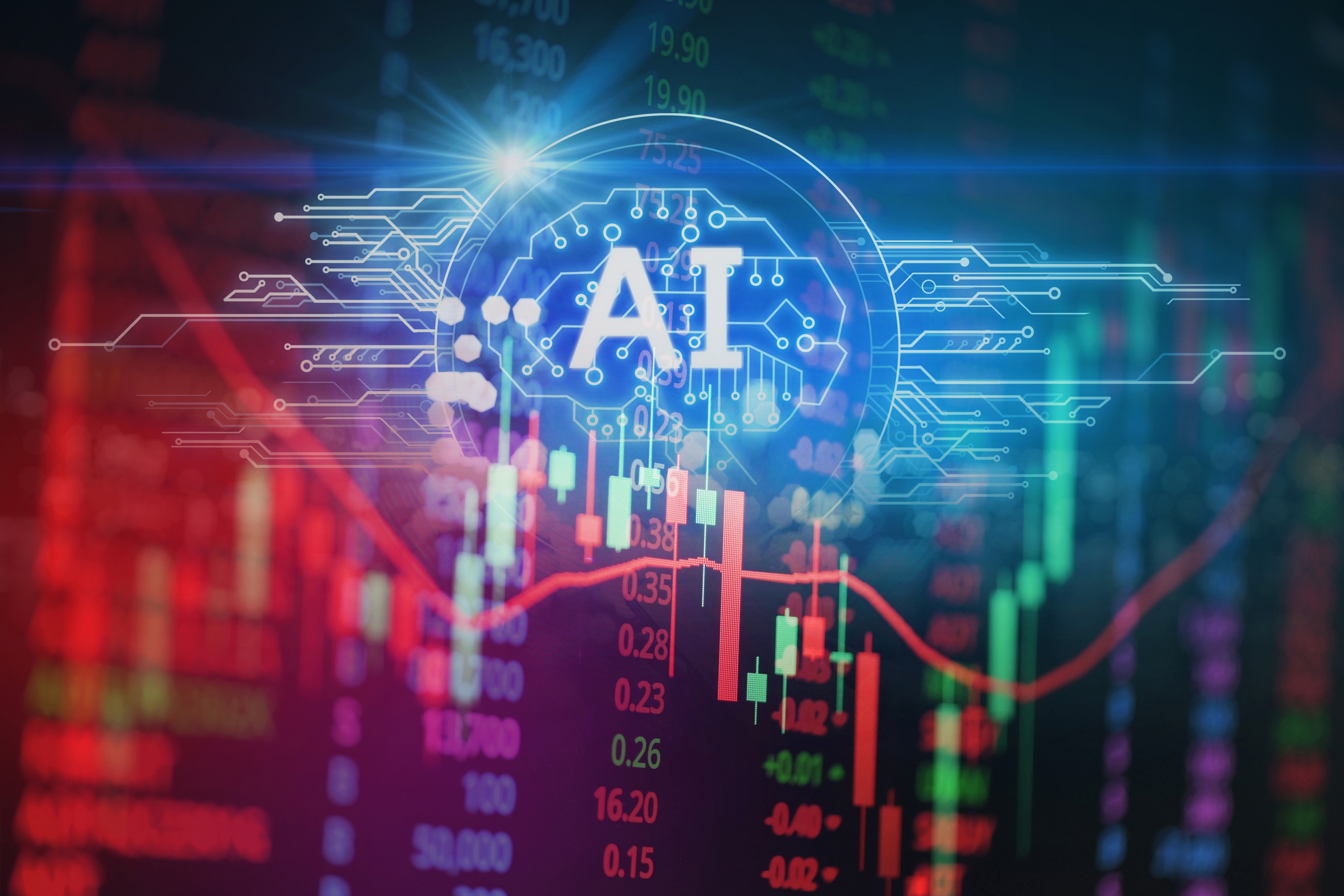Rising AI Demand Stokes Undersea Investments
As demand soars for AI, there’s a need to transport huge amounts of data across oceans. Tech giants have big plans for new submarine cables, including the longest ever.

To help you understand the trends surrounding new technologies and what we expect to happen in the future, our highly experienced Kiplinger Letter team will keep you abreast of the latest developments and forecasts. (Get a free issue of The Kiplinger Letter or subscribe). You'll get all the latest news first by subscribing, but we will publish many (but not all) of the forecasts a few days afterward online. Here’s the latest…
The explosion of generative AI is boosting long-term demand for all sorts of physical infrastructure, from chips and data centers to electric transmission lines and nuclear plants. Add underwater cables to the list.
The rise of AI is spurring bigger spending on new submarine cables, especially on routes that cross the Atlantic, though the trend is happening in waters around the world. Meta announced in February a 31,000 mile network that will touch every continent, making it the longest and highest-capacity subsea network ever.
From just $107.88 $24.99 for Kiplinger Personal Finance
Become a smarter, better informed investor. Subscribe from just $107.88 $24.99, plus get up to 4 Special Issues

Sign up for Kiplinger’s Free Newsletters
Profit and prosper with the best of expert advice on investing, taxes, retirement, personal finance and more - straight to your e-mail.
Profit and prosper with the best of expert advice - straight to your e-mail.
Meta’s new Project Waterworth seeks to unlock “global AI potential” by connecting users around the world with Meta’s huge data centers packed with Nvidia chips. The effort anticipates torrid global growth of Meta’s generative AI tools, which are now baked into Facebook and Instagram for answering questions, creating images, editing photos and more.
Amazon, Google and Microsoft are also spending heavily on subsea fiber-optic cables for global customers renting cloud computing, surfing the web and using apps. The billions of dollars being spent by the four tech giants shows the huge demand from end users, said Sarah McComb, principle business developer at Amazon Web Services, at a recent panel.
The trend bodes well for manufacturers of submarine cables, including Japan’s NEC, U.S.-based Subcom, and France’s Alcatel Submarine Networks, which owns a fleet of seven vessels.
Threats and challenges
But there are challenges. Geopolitical tensions are raising concerns about subsea cable disruptions, including recent episodes in the Baltic Sea and near Taiwan. The U.S. and others are on edge about Russia and China being behind the attacks. There are concerns about cable repair ships navigating hostile waters, such as the Red Sea. Another fear: That Chinese repair ships, relied on by many nations, could actually tamper with cables.
Threats are rising, but the reality is less worrisome. Most disruptions aren’t nefarious, and the industry is skilled at undersea repairs and maintenance. There are about 150-200 cable breaks per year across the nearly 600 cable systems that span more than 900,000 miles, according to the International Cable Protection Committee, a safety group that track disruptions. 80% are caused by fishing boats or anchors, and most of the rest occur from abrasion, equipment failure or environmental factors.
New cable systems include advanced sensors to detect damage or seismic activity, along with protective armor and physical security near the coastlines. Meta’s massive new project will use “enhanced burial techniques in high-risk fault areas, such as shallow waters near the coast, to avoid damage from ship anchors and other hazards.” Plus, the data traversing subsea cables is encrypted, making it extremely difficult, if not impossible, for a group tampering with cables to intercept and read.
Red tape is another roadblock to faster deployment. The industry is urging the U.S. to speed up the lengthy approval process so that more cables can be built faster, helping increase the redundancy of networks and reducing the damage of any one cable break. “The things that sort of keep me up at night, if you will, is that race between the coming demand and having the capacity to meet it,” said McComb of AWS.
Applications can take two years to be approved, and that’s after years of planning from the company doing the project. Multiple federal agencies are involved, with a focus on national security concerns.
Some streamlining is possible, but it won’t be all the industry wants, threatening to hamper the overseas ambitions of America’s AI leaders. The Trump administration is likely to look into cutting red tape for tech giants, but national security concerns will complicate efforts to quicken the process. The tech industry hopes global AI competition, including the race to so-called artificial super intelligence, will spur the U.S. to take bolder action.
Related Content
- What is AI Investing?
- The Explosion of New AI Tools
- Best AI Stocks to Buy: Smart Artificial Intelligence Investments
- Can Stocks Picked by Artificial Intelligence Beat the Market?
Profit and prosper with the best of Kiplinger's advice on investing, taxes, retirement, personal finance and much more. Delivered daily. Enter your email in the box and click Sign Me Up.

John Miley is a Senior Associate Editor at The Kiplinger Letter. He mainly covers AI, technology, telecom and education, but will jump on other business topics as needed. In his role, he provides timely forecasts about emerging technologies, business trends and government regulations. He also edits stories for the weekly publication and has written and edited email newsletters.
He holds a BA from Bates College and a master’s degree in magazine journalism from Northwestern University, where he specialized in business reporting. An avid runner and a former decathlete, he has written about fitness and competed in triathlons.
-
 Santa Claus Rally at Risk as Tech Stocks Slump: Stock Market Today
Santa Claus Rally at Risk as Tech Stocks Slump: Stock Market TodayThe Nasdaq Composite and Dow Jones Industrial Average led today's declines as investors took profits on high-flying tech stocks.
-
 7 Ways to Save Money on Almost Everything
7 Ways to Save Money on Almost EverythingHigh prices got you down? These strategies can help you reap deep discounts on everyday spending.
-
 My Top 10 Stock Picks for 2026
My Top 10 Stock Picks for 2026Each year, we ask an expert to pick 10 stocks that have the potential to beat the market over the next 12 months. Here are his choices for 2026.
-
 To Build Client Relationships That Last, Embrace Simplicity
To Build Client Relationships That Last, Embrace SimplicityAs more automation becomes the norm, you can distinguish yourself as a financial professional by using technology wisely and prioritizing personal touches.
-
 Client Demand Is Forcing Financial Advisers to Specialize: How to Deliver
Client Demand Is Forcing Financial Advisers to Specialize: How to DeliverThe complexity of wealthy clients' needs — combined with AI and consumer demand — suggests the future of financial planning belongs to specialized experts.
-
 Disney’s Risky Acceptance of AI Videos
Disney’s Risky Acceptance of AI VideosThe Kiplinger Letter Disney will let fans run wild with AI-generated videos of its top characters. The move highlights the uneasy partnership between AI companies and Hollywood.
-
 AI Appliances Aren’t Exciting Buyers…Yet
AI Appliances Aren’t Exciting Buyers…YetThe Kiplinger Letter Artificial intelligence is being embedded into all sorts of appliances. Now sellers need to get customers to care about AI-powered laundry.
-
 What to Expect from the Global Economy in 2026
What to Expect from the Global Economy in 2026The Kiplinger Letter Economic growth across the globe will be highly uneven, with some major economies accelerating while others hit the brakes.
-
 The AI Boom Will Lift IT Spending Next Year
The AI Boom Will Lift IT Spending Next YearThe Kiplinger Letter 2026 will be one of strongest years for the IT industry since the PC boom and early days of the Web in the mid-1990s.
-
 Amid Mounting Uncertainty: Five Forecasts About AI
Amid Mounting Uncertainty: Five Forecasts About AIThe Kiplinger Letter With the risk of overspending on AI data centers hotly debated, here are some forecasts about AI that we can make with some confidence.
-
 Worried About an AI Bubble? Here’s What You Need to Know
Worried About an AI Bubble? Here’s What You Need to KnowThe Kiplinger Letter Though AI is a transformative technology, it’s worth paying attention to the rising economic and financial risks. Here’s some guidance to navigate AI’s future.